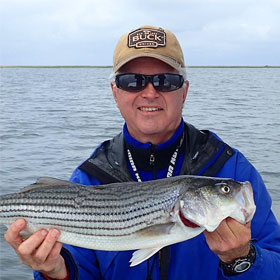Beginner’s Guide to Fly Fishing Flies for Trout
By Ken Schultz
Mar 22, 2021
An essential introduction to the types, purposes, and uses of fly fishing flies for trout in rivers, streams, lakes, and ponds
Trout can be caught using a variety of methods and fishing tackle, but fly fishing is especially effective and enjoyable. To get started you should know the following fundamentals about fly fishing flies for trout:
1. Most commonly caught trout species
Brown, brook, and rainbow are the most commonly caught trout species in North America. They exist in flowing waters, which includes rivers and streams, as well as in still waters, which includes lakes and ponds.
2. What do trout eat?
What trout eat varies depending on the season, type of water, and availability of forage. Aquatic insects are a major food, especially in flowing waters. Terrestrial insects at times are also prominent. Most fly fishing flies for trout imitate these foods.
Assorted baitfish are also consumed by trout, especially in still waters. Streamer flies, which mimic small fish, are the trout flies to use when baitfish are prey.
3. Fly fishing flies for trout
Many fly fishing flies for trout closely imitate natural food, especially insects. Others are suggestive rather than imitative, serving as attractors. The best fly fishing flies for trout represent the most prevalent current forage at the time you’re fishing.
Primarily tied on a single hook from a variety of natural and synthetic materials, fly fishing flies for trout can generally be categorized as floating or sinking.
Floating flies
Floating flies are made with buoyant materials and sit on the surface. They include dry flies and bugs and imitate a host of foods.
Dry flies
Like natural insects, dry flies and floating bugs are generally allowed to drift subject to whatever natural current or wind exists.
Sinking flies for trout
Sinking flies are fished below the surface and are made with materials that absorb water or are more dense than water, or, in some case, are lightly weighted. They include wet flies, nymphs, emergers, and streamers, and also imitate many foods. Sinking flies are more productive overall because gamefish feed most often below the surface.
Wet flies for trout
Wet flies represent subsurface forms of aquatic insects or, to a lesser extent, drowned terrestrial insects or small fish. They may be imitative or suggestive and generally drift subject to whatever natural current exists.
Insects for catching trout
Nymphs are usually smaller and represent the larval stage of aquatic insects, as well as some non-insect foods. Emergers represent aquatic insects that have reached the surface and are hatching into adults. Many of both are more suggestive than imitative; they also drift naturally.
Streamers
Streamers represent baitfish as well as leeches, worms, eels, etc.; they’re generally tied on long-shanked hooks, are often colorful, and may or may not closely mimic specific prey.
4. Movement of fly fishing flies for trout
It’s important that all fly fishing flies for trout appear to move naturally. In current it’s often necessary to avoid drag on the fly, which occurs when drifting line moves faster than the drifting fly and pulls the fly away from a targeted area quickly. This is avoided by making an in-air or on-water line mend.









